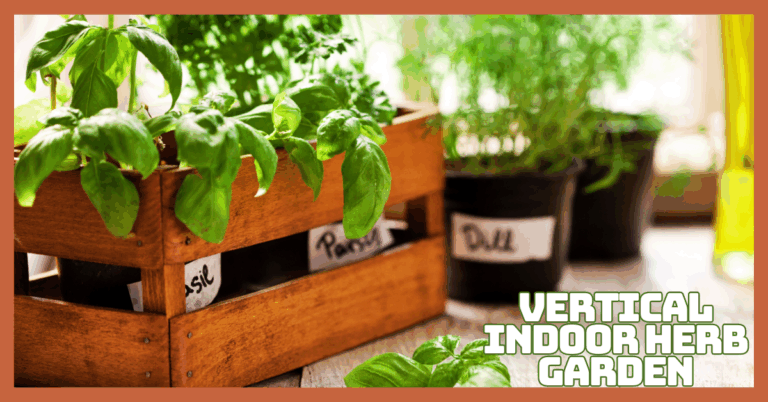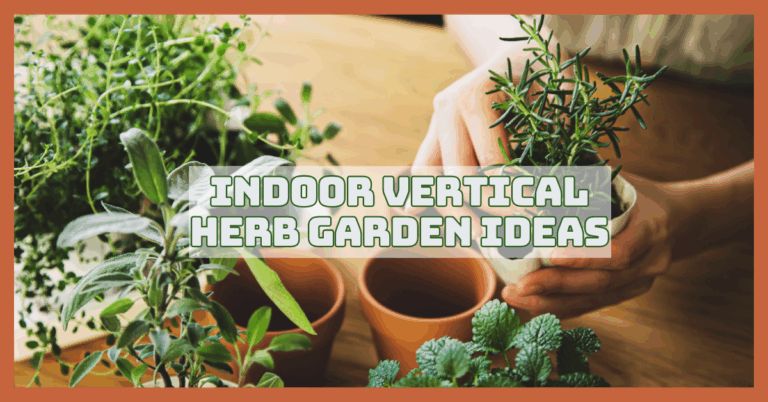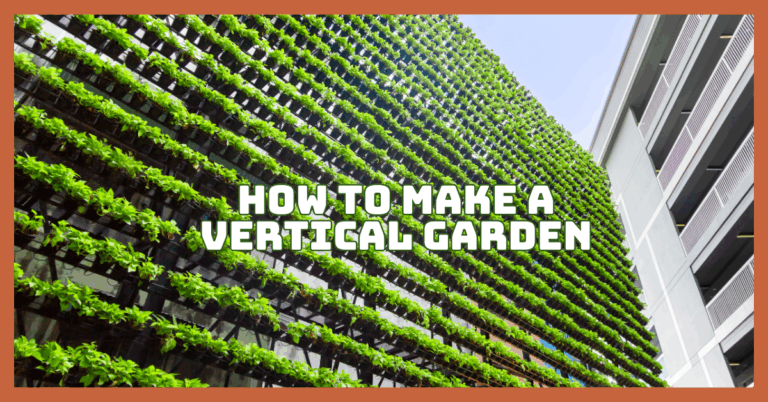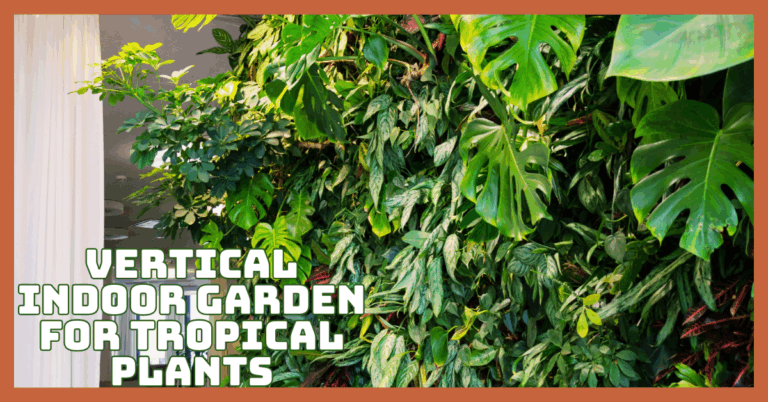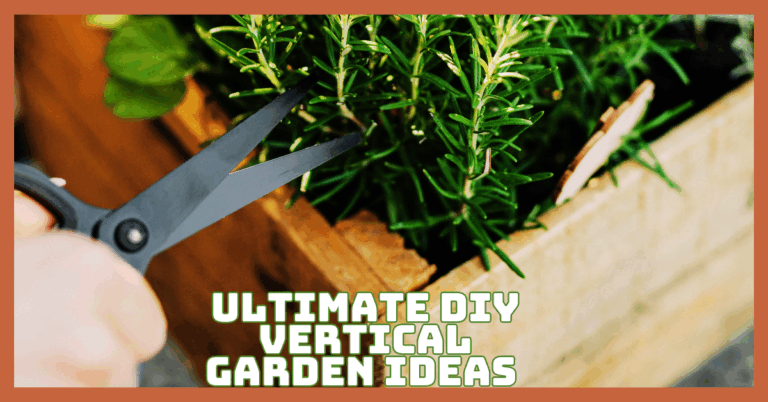Easy Vertical Garden Ideas
Easy Vertical Garden Ideas To Create A Flourishing Urban Oasis
Vertical gardening is a creative and space-efficient way to grow plants upward rather than outward, and it is ideal for urban environments, small yards, and balconies.
This innovative method maximizes limited space and adds beauty and greenery to walls and fences. Whether you're cultivating herbs, flowers, or vegetables, vertical gardens offer endless creative possibilities.
This article will explore inspiring and easy vertical garden ideas that can transform any small area into a lush, thriving green space.
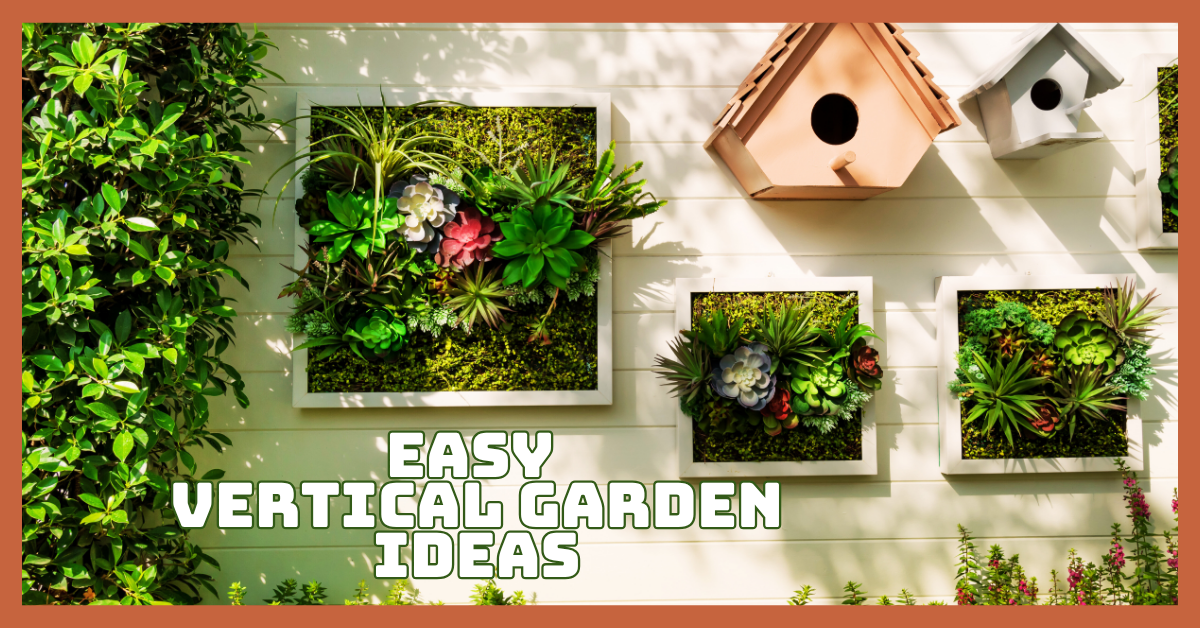
What Is Vertical Gardening?
Vertical gardening is a space-saving method of growing plants upward instead of outward, using structures like walls, trellises, hanging pots, shelves, or stacked planters.
This technique is Ideal For small spaces such as balconies, patios, or urban backyards where traditional gardening isn’t practical.
Gardeners can add some greenery to indoor or outdoor spaces and make the most of limited space by teaching plants to grow vertically.
Vertical gardens can support a variety of plants, including herbs, vegetables, succulents, and flowering vines. They also improve air circulation, reduce pests, and simplify maintenance tasks like watering and harvesting.
Whether built from simple materials like recycled bottles or designed with elaborate living walls, vertical gardening is a practical, stylish, and eco-friendly way to cultivate plants in any setting. A popular option for contemporary gardeners, it blends practicality and visual appeal.
Best Vertical Gardening Ideas
1. Wall-Mounted Planters
Wall-mounted planters are a classic vertical gardening choice. They can be made of ceramic, wood, plastic, or metal and come in various designs.
Ideal For
Vertical gardens are suitable for growing compact, low-maintenance plants like basil, thyme, parsley, succulents, and ferns.
These plants thrive in small containers and vertical systems. Herbs prefer growing zones 4–10, succulents flourish in zones 3–11, and ferns do best in zones 3–8.
Consider the climate and amount of sunlight in your area while selecting plants. Most of these varieties require minimal soil depth, making them perfect for vertical pockets or planters, while also offering beauty, texture, and practical use in daily cooking.
Where To Use
Vertical gardens thrive in kitchen walls, balconies, or living rooms where sunlight is available for at least a few hours. To grow successfully, use wall-mounted planters or vertical shelves, and ensure good drainage.
For herbs and succulents, choose south-facing spots. Indoors, supplement with grow lights if needed. Water regularly but avoid overwatering.
Use a lightweight potting mix and fertilize monthly to encourage lush growth in limited space. Vertical gardens also add a vibrant, decorative touch.
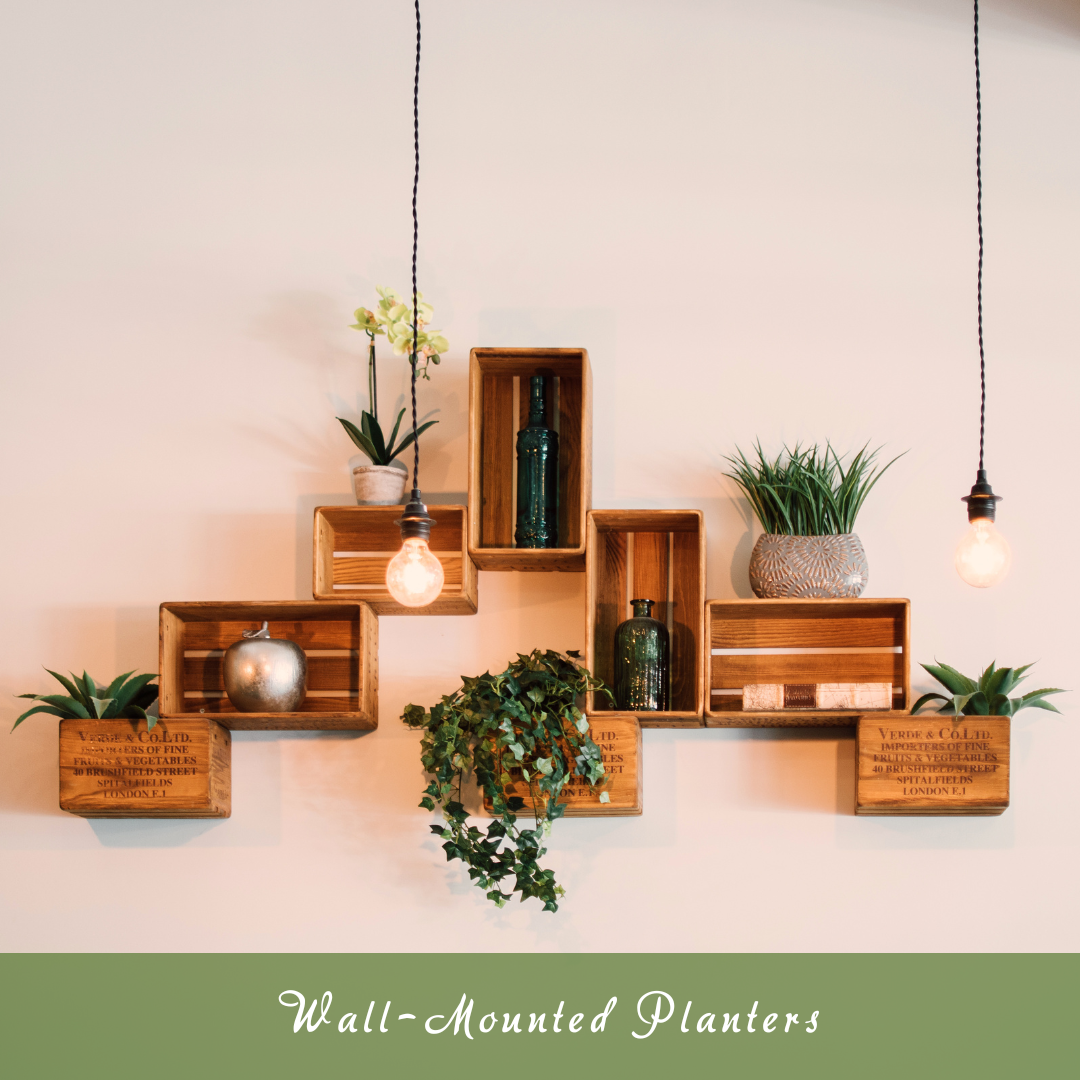
2. Pallet Gardens
Transform old pallets into vibrant vertical gardens—an eco-friendly, space-saving solution perfect for growing greens, berries, and blooms on patios or fences.
Ideal For
Pallet gardens are excellent for growing leafy greens like spinach, kale, and lettuce (zones 4–9), strawberries (zones 4–9), and flowers like pansies and marigolds (zones 3–10).
These plants are compact and thrive in the shallow pockets of a pallet garden. Leafy greens provide fresh harvests, strawberries add a sweet treat, and flowers offer colourful charm, making pallet gardens a balanced, vibrant option for small-space or vertical gardening enthusiasts.
Where To Use
Start vertically leaning or mounting a pallet for backyard fences or patios. Staple landscape fabric is placed on the back and bottom of each slat to form planting pockets, then filled with well-draining soil.
Pick a spot that receives 4–6 hours of sunlight daily, then put flowers and leafy greens on the upper rows and strawberries in the middle.
Water consistently and fertilize monthly. Pallet gardens are low-cost and offer an attractive, eco-friendly way to grow food and blooms vertically.
3. Hanging Planters
Add lush greenery with hanging planters—an elegant, space-saving way to display trailing plants indoors or outdoors, perfect for creating a cascading vertical garden effect.
Ideal For
One of the most creative vertical gardening ideas is using trailing plants like English ivy, pothos, and spider plants to add cascading greenery and natural beauty to indoor or outdoor spaces.
English ivy grows well in zones 4–9, pothos in zones 10–12, and spider plants in zones 9–11. These low-maintenance plants thrive in indirect light, making them perfect for vertical displays.
Their elegant vines and lush foliage add visual interest, purify indoor air, and adapt well to containers, making them Ideal For vertical or hanging gardens.
Where To Use
Trailing plants grow beautifully from hanging baskets on porch ceilings, pergolas, or kitchen windows. Hang baskets where the plants receive bright, indirect light.
Water is used when the top inch of soil feels dry; occasionally, mist is used for humidity. Prune regularly to encourage fuller growth and remove dead leaves.
These locations allow vines to cascade freely, creating a refreshing, green curtain effect and enhancing indoor and outdoor vertical garden charm.
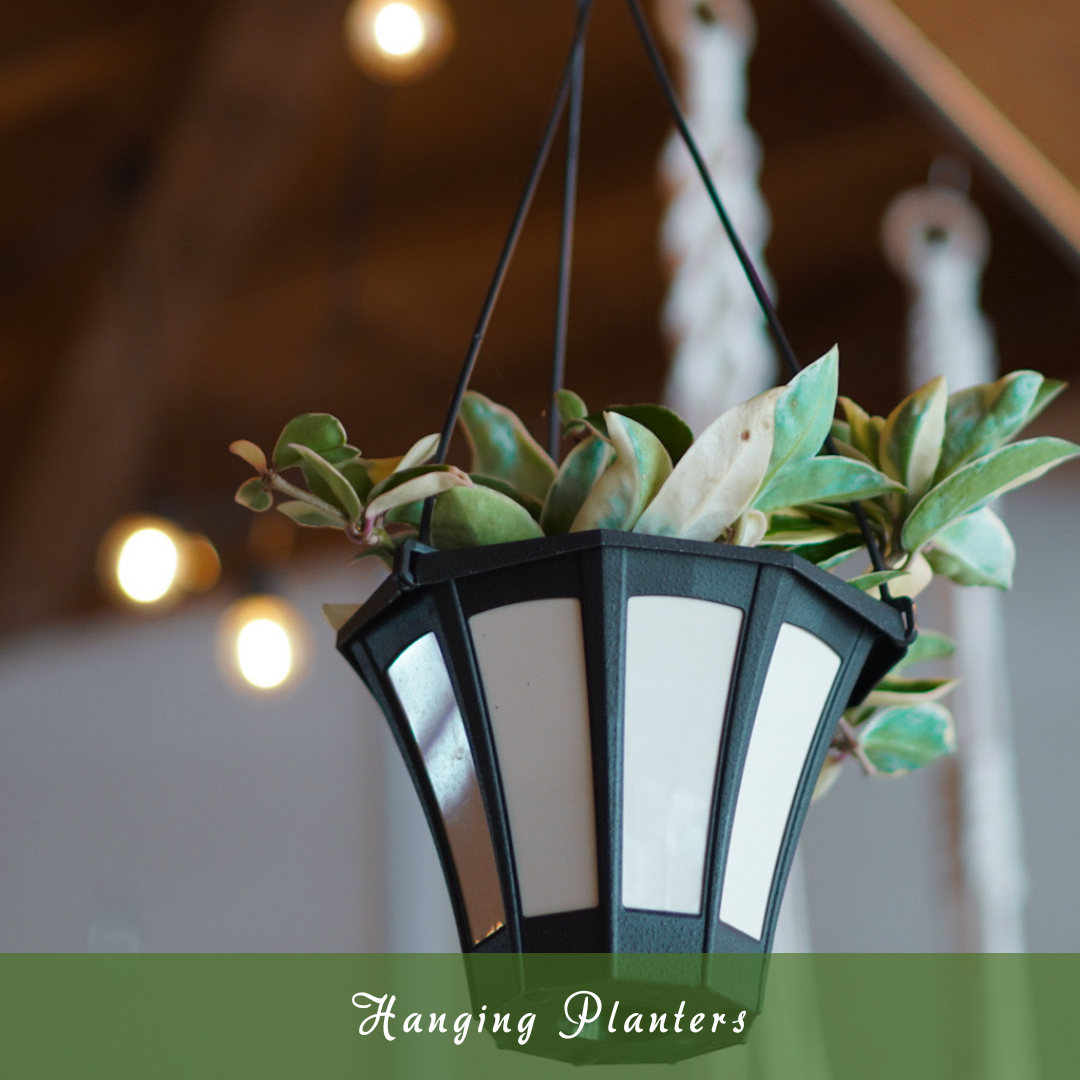
4. Shoe Organizer Garden
Turn a fabric shoe organizer into a clever vertical garden—perfect for growing herbs and flowers in tight spaces like balconies, fences, or shed walls.
Ideal For
A shoe organizer garden is perfect for growing herbs like parsley, cilantro, and thyme (zones 4–10) and small flowers such as nasturtiums, calendula, and pansies (zones 3–10).
Shoe organizer gardens offer one of the most practical vertical gardening ideas for maximizing space while growing herbs and small flowers in compact areas.
Herbs provide fresh flavours for cooking, while flowers add colour and attract pollinators. This upcycled garden method is sustainable and space-efficient for balconies or small outdoor areas.
Where To Use
Hang the organizer on fences, walls, or shed doors where it receives at least 4–6 hours of sunlight. Punch drainage holes in each pocket and fill them with lightweight potting mix.
Plant herbs on the upper rows and flowers below for cascading beauty. Water regularly, as fabric dries quickly, and fertilize monthly for healthy growth.
This creative setup is Ideal For maximizing vertical space while adding greenery and colour to underused outdoor surfaces.
5. Vertical Hydroponics
Vertical hydroponics is a space-saving, soilless growing method great for leafy greens, herbs, and strawberries, offering high yields and year-round harvests in controlled environments.
Ideal For
Vertical hydroponics systems are perfect for growing leafy greens like lettuce, spinach, and arugula (zones 4–9), strawberries (zones 4–9), and herbs such as basil, parsley, and chives (zones 4–10).
These plants thrive in soilless environments and have shallow root systems, making them well-suited for vertical nutrient delivery.
Hydroponics allows for faster growth, higher yields, and year-round production, making it a wise choice for urban gardeners or anyone with limited space.
Where To Use
Set up hydroponic towers in indoor grow rooms, patios, or greenhouses where temperature, humidity, and light can be controlled.
Use grow lights indoors or natural sunlight in greenhouses. Circulate a nutrient-rich water solution through the tower to feed plants.
Monitor pH and nutrient levels regularly. Start with seedlings in net cups and keep the system clean to prevent algae. Vertical hydroponics requires minimal space and offers a sustainable, efficient way to grow fresh produce at home.
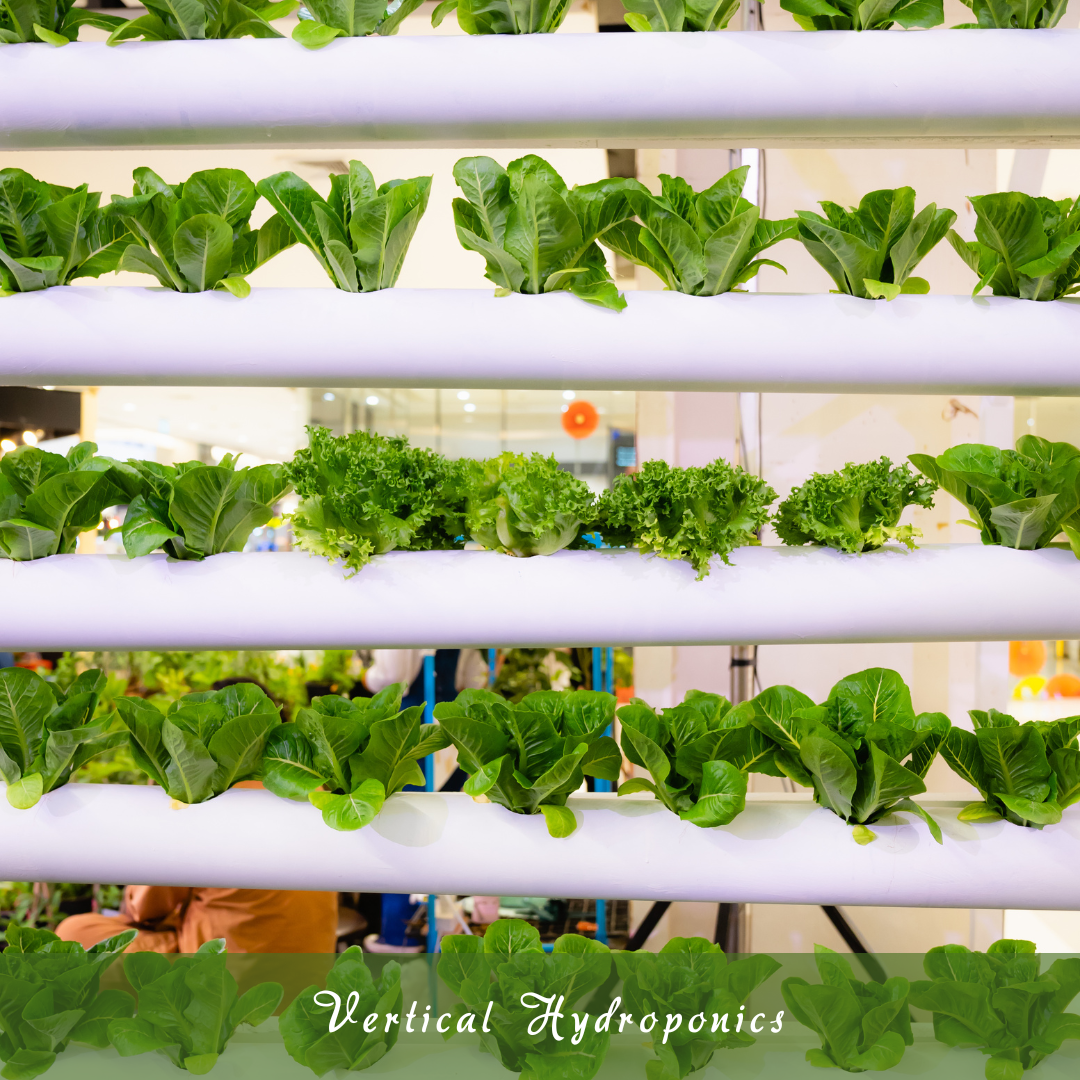
6. Gutter Gardens
Mount unused rain gutters on walls or fences to create long, narrow planters.
Ideal For
Gutter gardens are perfect for growing lettuce, arugula, and strawberries. Lettuce thrives in zones 4–9, arugula in zones 3–9, and strawberries in zones 4–9.
These plants grow well in narrow, shallow containers like gutters, making them perfect for compact spaces. Arugula and lettuce grow rapidly and can be collected several times, and strawberries produce tasty fruits.
Gutter gardens are Ideal For growing these crops vertically, saving space while providing fresh, edible plants.
Where To Use
Gutter gardens can be mounted on fences or balcony railings, creating long, narrow planters that maximize space. Ensure the gutters have proper drainage holes and are securely attached.
Fill with well-draining soil and place in an area that receives at least 6 hours of sunlight. Water regularly, but avoid waterlogging.
Gutter gardens on fences or balcony railings are a great way to grow fresh, homegrown produce while adding a green touch to vertical spaces.
7. PVC Pipe Planters
PVC pipe planters offer a creative, space-saving solution for growing herbs, strawberries, and succulents vertically, making them perfect for small gardens, patios, or sunny walls.
Ideal For
PVC pipe planters are great for growing strawberries, herbs like oregano, thyme, and basil, and succulents like jade plants and aloe vera.
Strawberries thrive in zones 4–9, oregano in zones 5–10, thyme in zones 4–9, basil in zones 5–10, and succulents in zones 3–11.
These compact plants flourish in narrow spaces, making them ideal for the tubular structure of PVC planters, which promotes efficient use of vertical space.
Where To Use
Mount PVC pipe planters on outdoor walls or inside greenhouses, ensuring they receive at least 6 hours of sunlight daily—drill holes for proper drainage and plant access.
Fill the pipes with lightweight, well-draining soil and insert plants into the openings. Water herbs and strawberries consistently, while succulents need less frequent watering.
This setup allows for vertical growth in limited areas and works well in controlled environments like greenhouses or sunlit exterior walls.
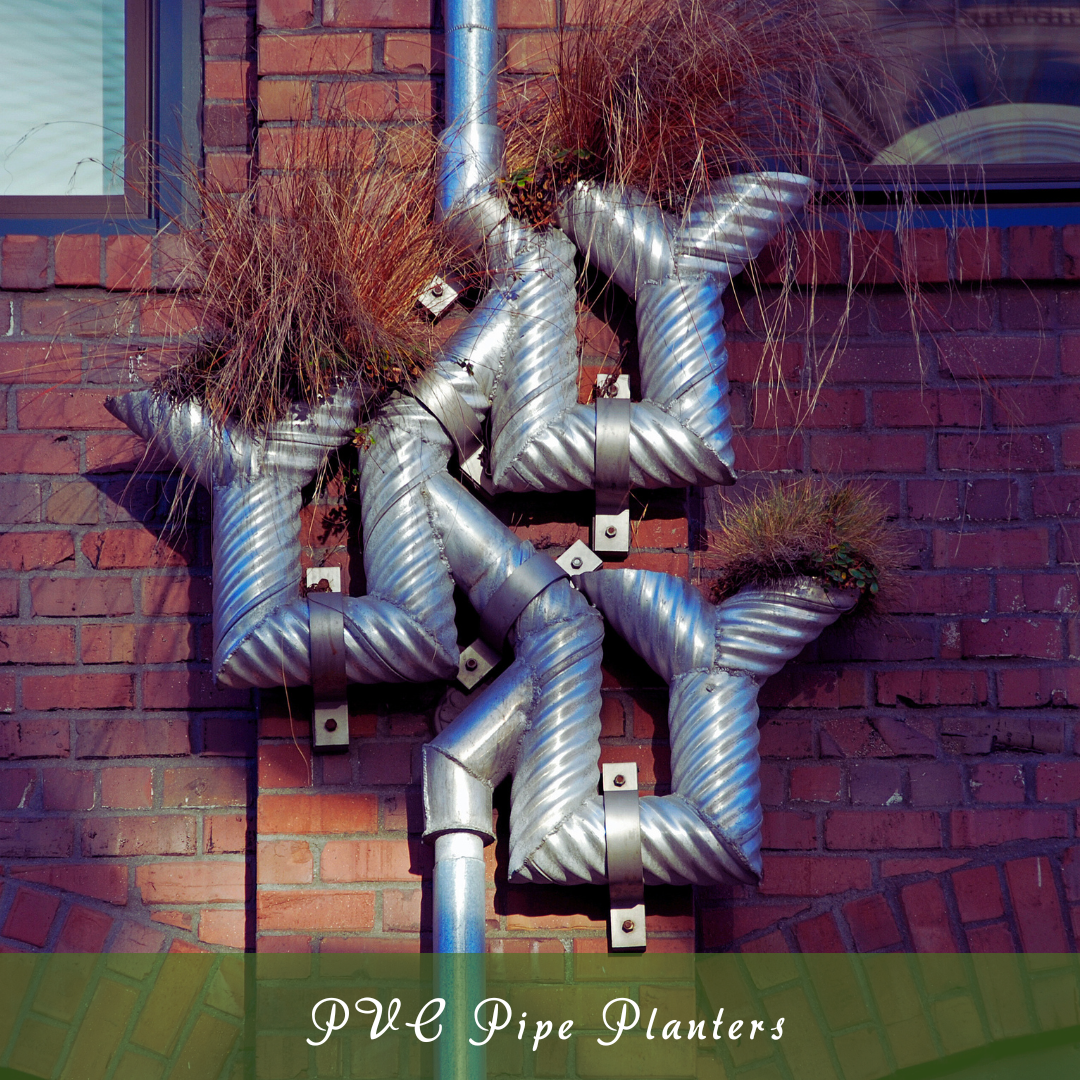
8. Pocket Planters
Fabric or felt pockets mounted on walls are excellent for decorative and edible plants.
Ideal For
Vertical gardening ideas like using compact spaces to grow lettuce, basil, mint, and colourful flowers allow you to enjoy fresh harvests and vibrant blooms even in the smallest areas.
Lettuce grows well in zones 4–9, basil in zones 5–10, mint in zones 3–11, and petunias in zones 4–11. These plants thrive in compact spaces, offering fresh produce and vibrant colours.
Lettuce and herbs are quick-growing, while flowers provide beautiful blooms, which are all ideal for small vertical gardening setups, especially where space is limited.
Where To Use
These plants can be grown on kitchen walls or balconies using vertical planters, wall-mounted shelves, or hanging pots. Ensure they are exposed to 4–6 hours of sunlight daily.
Use lightweight, well-draining soil, and water regularly, especially for herbs like mint that need consistent moisture. For decorative flowers, deadhead spent blooms to encourage more flowers.
Vertical gardens on walls and balconies maximize space while adding beauty and functionality to your home or garden.
9. Hanging Bottle Gardens
Turn plastic bottles into charming vertical gardens—perfect for growing fresh herbs and flowers in compact spaces like window grilles or sunlit fences.
Ideal For
Vertical gardens are perfect for growing herbs like basil, parsley, and thyme, as well as lettuce and small flowers like petunias and pansies.
Basil thrives in zones 5–10, parsley in zones 4–9, thyme in zones 4–9, lettuce in zones 4–9, and petunias in zones 4–11.
Due to their compact growth patterns, these plants are suitable for vertical gardening. They are also aesthetically pleasing and functional, Ideal For fresh herbs and vibrant flowers in small areas.
Where To Use
These plants thrive on window grilles or fences, which can receive ample sunlight. Install vertical planters, hanging baskets, or wall-mounted pockets for an easy, space-saving setup.
Ensure the garden gets at least 6 hours of direct sunlight each day. Use lightweight, well-draining soil, and water regularly, allowing proper drainage.
Prune herbs to encourage new growth and deadhead flowers to promote continuous blooming. These setups turn your window grilles or fences into productive, vibrant green spaces.
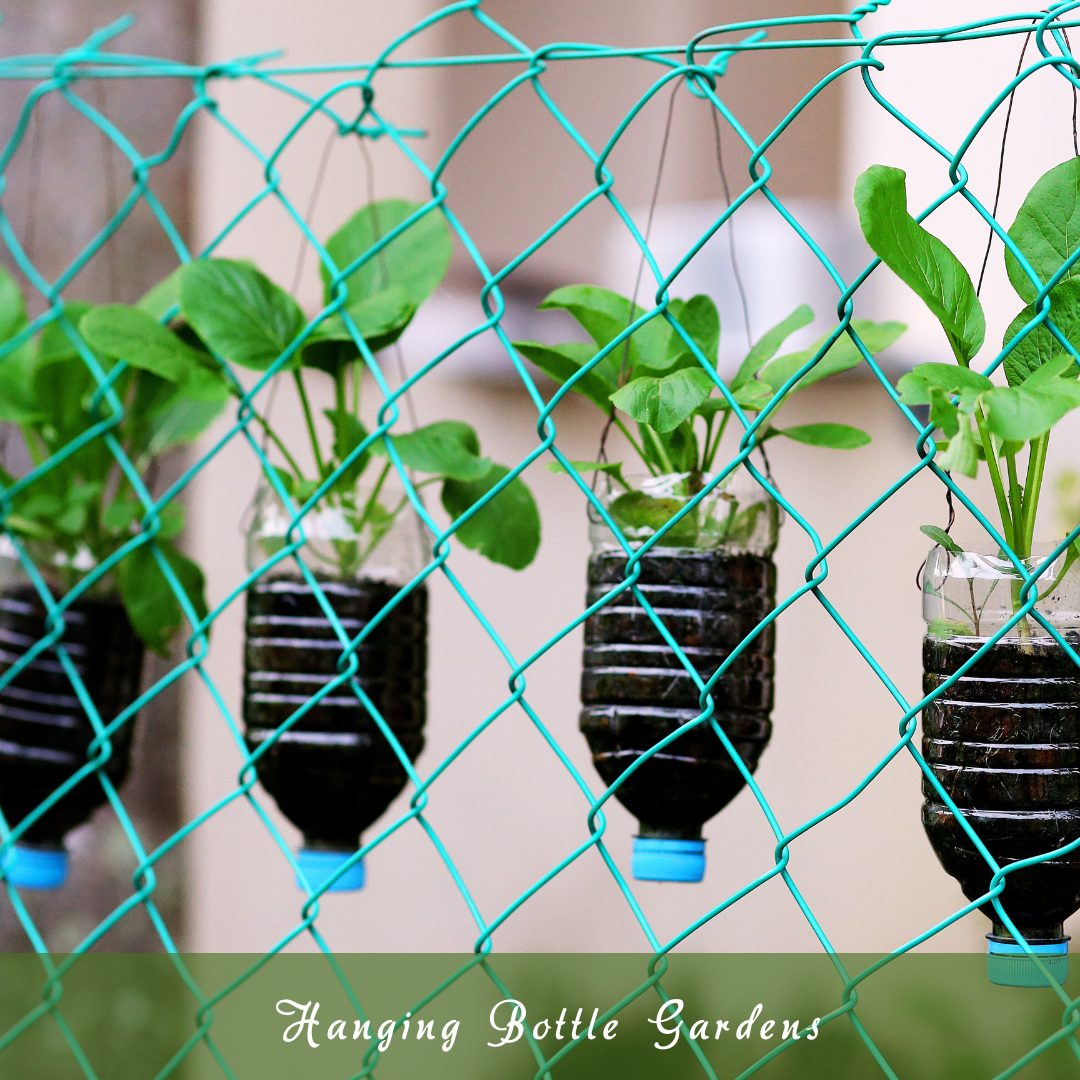
10. Crate Stacks
Crate stacks are a stylish and practical vertical gardening method, excellent for growing root vegetables and flowers in compact spaces with a charming, rustic appeal.
Ideal For
Crate stacks offer one of the most functional vertical gardening ideas, providing ample depth for root vegetables and space for flowering plants in a compact, rustic setup.
Carrots thrive in zones 3–10, beets in zones 3–10, radishes in zones 3–10, marigolds in zones 2–11, and kale in zones 4–9.
These plants benefit from the multi-level setup of stacked crates, which provides enough depth for root crops and space for flowering plants, combining functionality with rustic charm.
Where To Use
Crate stacks work beautifully in your backyard or entryway. Stack the crates securely in a sunny spot with good drainage.
Fill each crate with well-draining soil, ensuring root crops like carrots have enough depth. Water regularly, but ensure the crates drain well to avoid waterlogging.
The rustic look of stacked crates saves space and adds visual interest to outdoor areas. Crate stacks are perfect for growing vibrant, fresh vegetables and flowers in a small space.
11. Stackable Planters
Grow fresh greens and herbs in tight spaces with stackable planters—modular, space-saving units. Ideal for patios or balconies with moderate sunlight and easy maintenance.
Ideal For
Stackable planters are suitable for growing lettuce, radishes, and herbs like basil, mint, and cilantro. Lettuce and radishes thrive in zones 4–9, while herbs grow well in zones 4–10.
These compact plants don’t require deep soil, making them perfect for the limited depth of stackable planters. With their quick growth and continuous harvest, these plants offer a productive way to enjoy fresh greens and flavours in a small, vertical garden space.
Where To Use
Place stackable planters on patios or balconies that get 4–6 hours of sun. Assemble the modular units securely, ensuring each tier has drainage.
Fill each level with well-draining potting mix, planting leafy greens on top and herbs or radishes on lower levels. Water regularly and fertilize lightly every few weeks.
Their vertical design makes watering efficient and keeps maintenance low. This setup is excellent for small-space gardeners who grow fresh produce in a compact footprint.
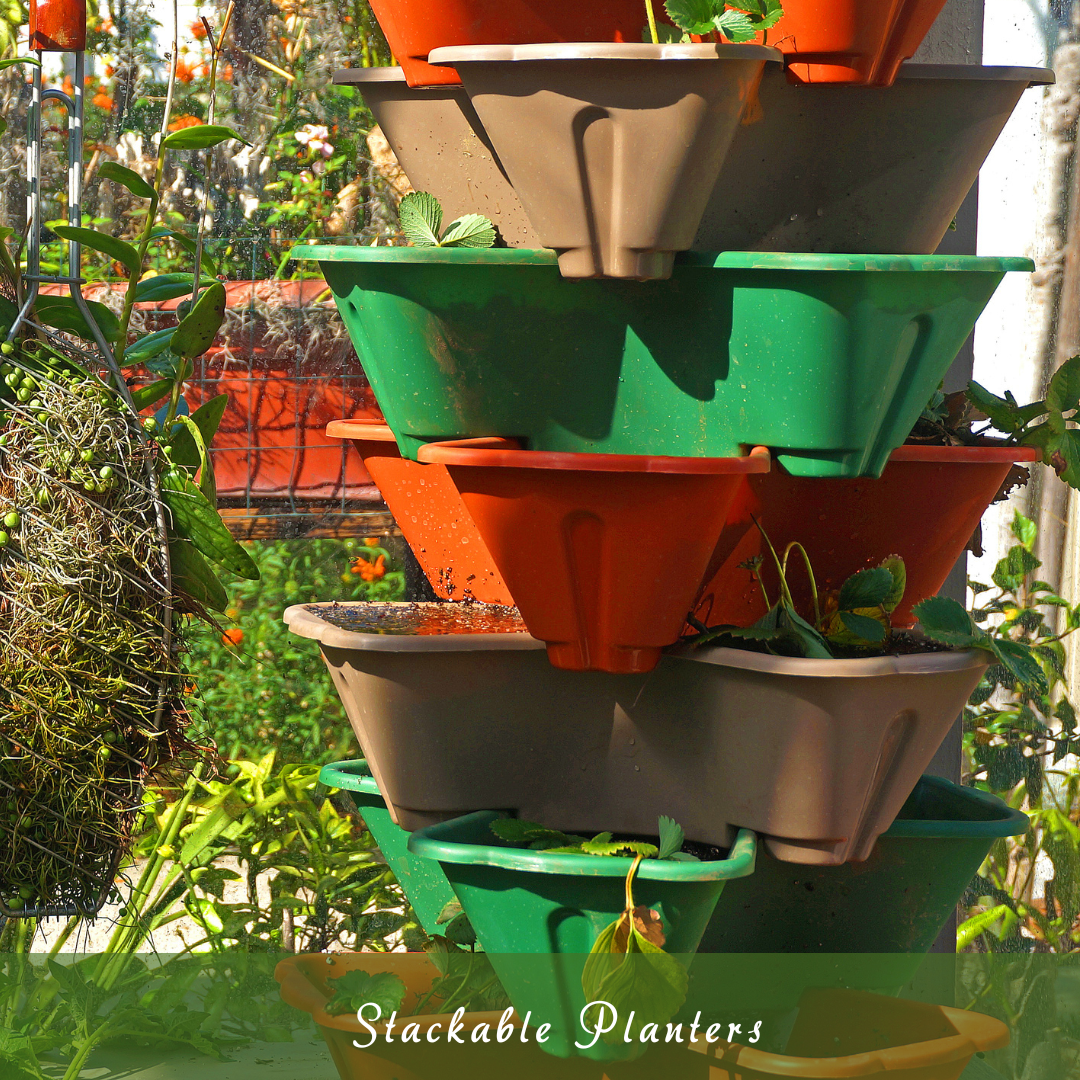
FAQs
1. What Are The Benefits Of Vertical Gardening?
Vertical gardens save space, improve air circulation, reduce pests, and add aesthetic appeal to indoor and outdoor spaces. They're also easier on the back since less bending is required.
2. What Plants Are Best For Vertical Gardens?
Ideal plants include herbs (basil, parsley), leafy greens (lettuce, spinach), vining vegetables (tomatoes, cucumbers), and flowering plants (petunias, pansies, morning glories).
3. Can I Grow Vegetables In A Vertical Garden?
Yes! Many vegetables like beans, peas, cherry tomatoes, and lettuce do well in vertical gardens with proper sunlight, watering, and support.
4. How Do I Water A Vertical Garden?
You can hand-water with a hose or watering can, or install a drip irrigation system. Ensure water reaches all levels evenly and doesn't pool at the bottom.
5. Do Vertical Gardens Need Sunlight?
Absolutely. Most edible and flowering plants need 4–8 hours of sunlight daily. Choose a sunny wall or use grow lights if indoors.
6. Can I Make A DIY Vertical Garden?
Yes! Use items like wooden pallets, shoe organizers, PVC pipes, or recycled bottles. It's a budget-friendly and creative gardening option.
7. How Do I Maintain A Vertical Garden?
Regularly check for pests, prune overgrowth, rotate plants seasonally, and ensure proper watering. Fertilize as needed, depending on the plants.
8. Is Vertical Gardening Suitable For Beginners?
Definitely. Start with easy-care plants like herbs or succulents. Choose a simple structure and learn as you go.
9. Can I Use Vertical Gardening Indoors?
Yes, indoor vertical gardens are great for herbs, small vegetables, and houseplants. Just ensure good light and airflow.
Conclusion
Vertical gardening transforms small or unused spaces into vibrant and productive green areas. Embracing vertical gardening ideas allows you to maximize small or unused spaces, turning them into lively, productive areas for growing fresh produce and beautiful greenery.
These creative solutions are perfect for urban homes, patios, and indoor spaces. You can enjoy fresh produce and stunning foliage year-round with minimal effort and space. Embrace vertical gardening to elevate your green space—literally and beautifully.
I trust you enjoyed this article on Feng Shui For Gardens To Cultivate Peace And Good Fortune. Please stay tuned for more blog posts soon. Take care!
JeannetteZ
>>> Please click here to read my all-inclusive article, About The Essential Companion Planting Guide <<<
>>> Please click here to read my all-inclusive article about Container Gardening <<<
>>> Are you interested in homegrown herbs and medicine? Please click here to find out more about it! <<<
Your Opinion Is Important To Me
Do you have thoughts, ideas, or questions? I would love to hear from you. Please leave me your questions, experiences, and remarks about this article on Easy Vertical Garden Ideas To Create A Flourishing Urban Oasis in the comments section below. You can also email me at Jeannette@Close-To-Nature.org.
Disclosure
This post may contain affiliate links. As an Amazon Associate and other affiliate programs, I earn from qualifying purchases at no extra cost to you. Please read my full affiliate disclosure.
You might also enjoy these blog posts:
Feng Shui For Gardens To Cultivate Peace And Good Fortune
Feng Shui for Small Bedrooms To Create A Calming Retreat
Feng Shui For A Work Desk That Sparks Creativity And Motivation
Feng Shui For Architecture That Inspires Wellness
Feng Shui For Kitchens To Elevate Your Cooking Space


